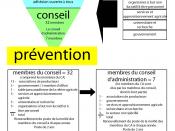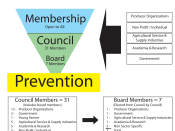1.Assumptionsâ¢Organizational Culture: According to Mazumdar-Shaw, managing infinite risk has not been part of the traditional mindset at Biocon. In this case, it is difficult for Biocon to make the necessary changes smoothly and in a sustainable manner without the right organizational culture and values being adopted.
â¢Resources: Moving from a competency in enzyme production to drug discovery requires expenditures of large amounts of money. As mentioned in the case, "there would be some questions about whether the company was spreading its resources too thinly across different stages in different sectors." Given the limited financial resources available, Biocon is in a dilemma over whether or not to proactively expand drug discovery.
â¢Role of Government: The regulatory environment that previously had provided protection for a process patent is changing. Mechanisms to establish a good relationship with the government and to regain protectionism for a process patent are now under active consideration.
â¢Opportunities: Biology-based drug manufacturing processes are expected to gain ground in future. This will provide biotech companies with great opportunities to drug discovery.
â¢Competition: The Indian generics market consisted of more than 10,000 small companies producing less expensive copycat versions of patented drugs and selling them both locally and in countries with limited patent protection. In order to survive intensive and tough competition, Biocon needs to create an image of a reliable company that is able to provide highly competent technical products and support to satisfy its customers.
2.Statement of the Problemâ¢The board of directors at Biocon does not actively support Mazumdar-Shaw's propositional vision as the current organizational culture is averse to risk-taking.
â¢There is intensive competition in the Indian generics market. Nevertheless, there are also considerable pricing pressures from low-cost Chinese competitors.
â¢The regulatory environment is changing, and a process patent is no longer protected...



Biocon Ltd.:Building a Biotech Powerhouse
i found this paper very helpful. its all about the Biocon Ltd.:Building a Biotech Powerhouse
0 out of 0 people found this comment useful.